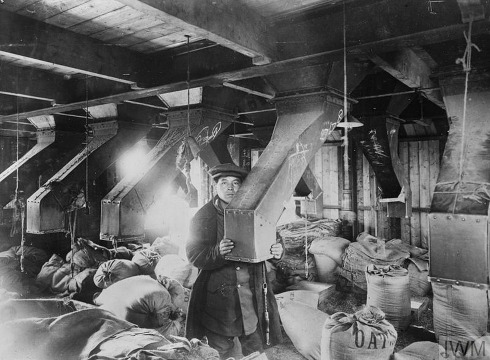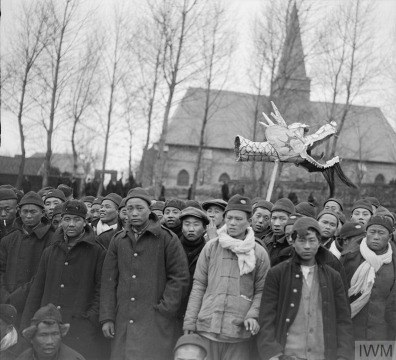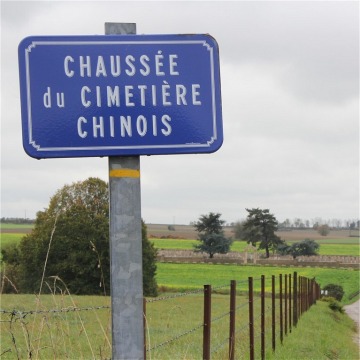Bill Hillman's Monthly Military Tribute The Chinese Labour Corps. filled the sandbags for the trenches ~ loaded the guns, ammunitions and food onto lorries or trains ~ cleared up after a train was derailed or a headquarters building shelled.
AS YOU WERE . . .
WAR YEARS ECLECTICA :: JUlY 2021
2021.07 Edition
GREAT WAR FACTOIDS III
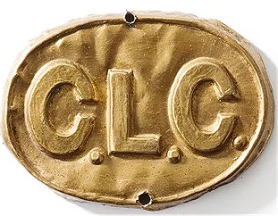
The Chinese worked on the Western Front
The Forgotten Army of 100,000
They were volunteers from the Chinese countryside who were sent to Europe to fulfil a vital, but almost completely overlooked role in making an Allied victory possible.
They were paid a pittance, and were generally regarded by both the British and French as expendable ‘coolies’.https://multimedia.scmp.com/ww1-china/ By 1916, the Allied demand for labour in the First World War was critical – the British Government had already discussed the possible use of Chinese Labour, but dismissed the idea, partly due to pressure from the Trade Unions in the UK. Finally, late in 1916, the Government, followed the French in recruiting Chinese ‘coolie’ labour, known to be hard working and cheap, for use behind Allied Front lines. In total an estimated 96,000-100,000 men were recruited into the Chinese Labour Corps (CLC).
Chinese Labour Corps In WWI
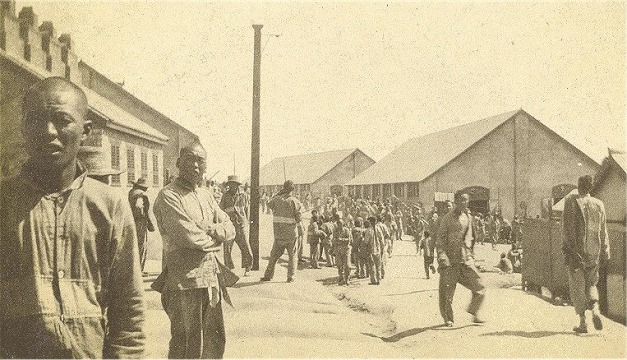
Photo: David Livingstone
The British settlement in Weihai during recruitment.They were a civilian force, but subject to Military law and wore a uniform of sorts. Unskilled labourers, recruited mainly from the poor farming provinces of Shandong and Zhili, in northern China, were promised up to four times their normal earnings. Their families would also receive a separation allowance similar to British Service families and a bonus of 15 Chinese dollars for each new recruit.
The men signed a three-year contract as non-combatants, which included food clothing and medical treatment. Initially they had their traditional ‘queue’ pigtail cut off and were issued with a bracelet stamped with their number rather than their name. This practice was later stopped as it was deemed degrading. A copper cap badge with the letters CLC was adopted.
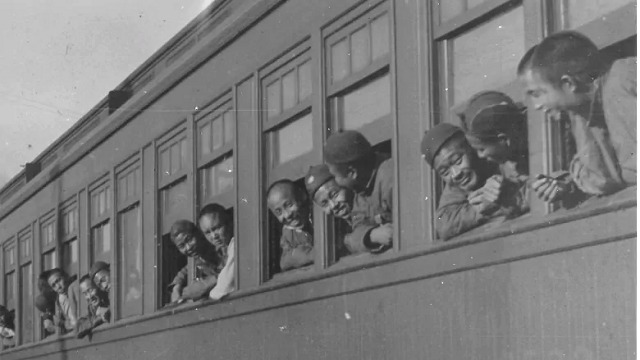
Members of the Chinese Labour Corps lean out the windows of a Canadian Pacific Railway carIn April 1917, the first contingent of the Chinese Labour Corps arrived at the Western Front, having left Weihai-Wei Port in January. The initial route was by ship, via the South African Cape or the Panama Canal. The long journey led to high numbers of sickness, so breaking the journey up, going overland via Canada, later became the preferred option. It is estimated that around 84,000 men arrived on the quaysides of Liverpool or Plymouth, before continuing on to Folkestone and ultimately France.
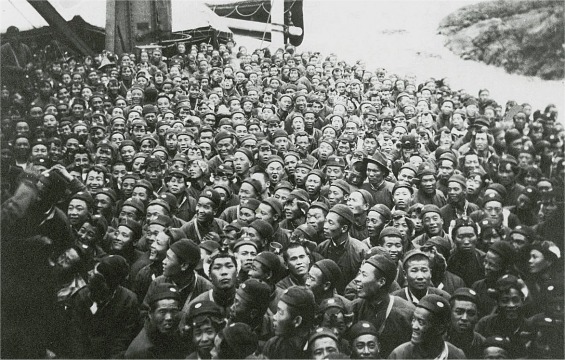
Photo: Kautz Family YMCA Archives, University of Minnesota
Chinese workers on their way to France.The strangest aspect is the absolute secrecy with which the whole operation was carried out. It was impossible to keep the Canadian leg of the journey a complete secret, and there was some mention in the Press, but the Liverpool newspapers make no mention at all in 1917 or 1918 of Chinese men being conveyed through the Port and then on to trains and out of the city heading south.
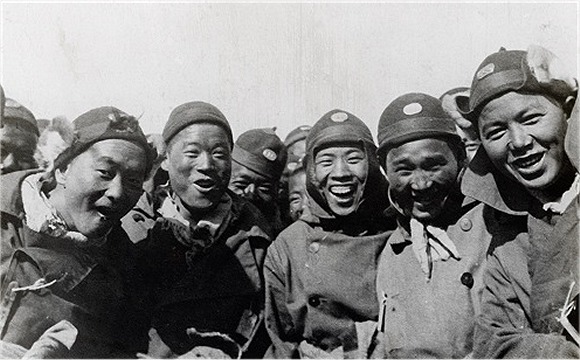
Image: W J Hawkings Collection
In April 1917, the first contingent of the Chinese Labour Corps arrived at the Western Front,
having left Weihai-Wei Port in January.With the men being tightly packed into ships and trains, it is perhaps no surprise that many arrived in Britain suffering from disease and already close to death. Kuo Ch’ing Shan, was the first CLC member to be buried in Britain. He was admitted straight from his ship into the Liverpool Port Sanitary Hospital, suffering from Pulmonary Tuberculosis and died on 6 June 1917 aged 26. Mumps was another common illness among the men and ships commonly arrived with multiple cases.
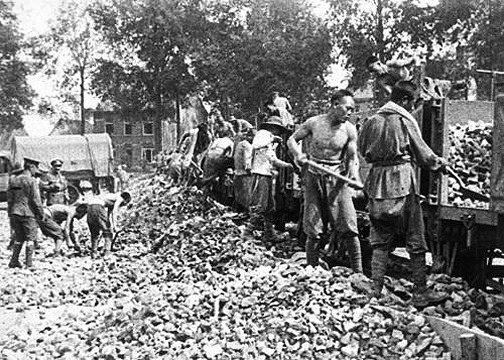
Image: W J Hawkings Collection
After being shipped to northern France,
they were put to work behind the lines to keep the war machine in motionAfter being shipped to northern France, they were put to work behind the lines to keep the war machine in motion — digging trenches, carrying and stacking ammunition, hauling supplies, repairing military tanks and vehicles, transporting and assembling shells for artillery, carrying water while under fire for British troops and the grisly job of cleaning up the bloody battlefields and digging graves. The work continued well after the Armistice of Nov. 11, 1918. Thousands died on the Western Front and some died in Canada on the journey to and from the war. Most were buried in unmarked graves. When it was finally time for the men to go home in 1919 and 1920, more than 40,000 returned via Canada.
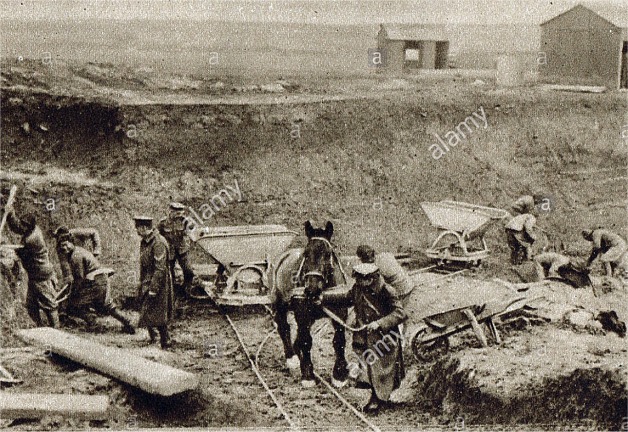
The Chinese Labour Corps, the fFrgotten Army of WWIA giant canvas created and exhibited in Paris during the war, depicting France surrounded by its allies initially included China — but the Chinese section was painted over to include the United States after Americans joined the war in 1917 -- three years into the conflict.
PHOTO GALLERY
Chinese Labour Corps in WWI
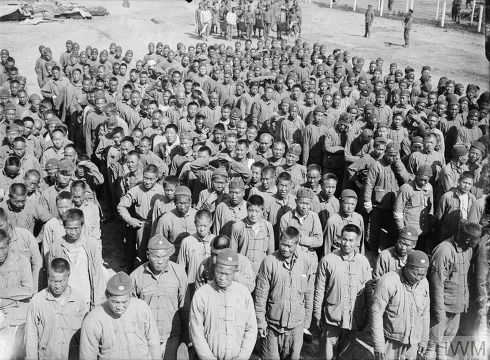
Imperial War Museums
Roughly 140,000 Chinese workers worked for the Allies on the Western Front.
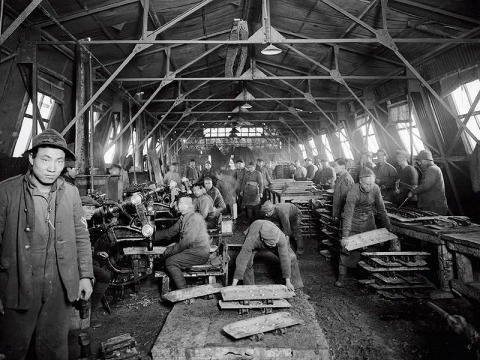
(Wikimedia Commons/Chatham House, London)
Chinese laborers comprised the largest non-European workforce during World War I, a
nd were tasked with everything from digging trenches to manning factories.
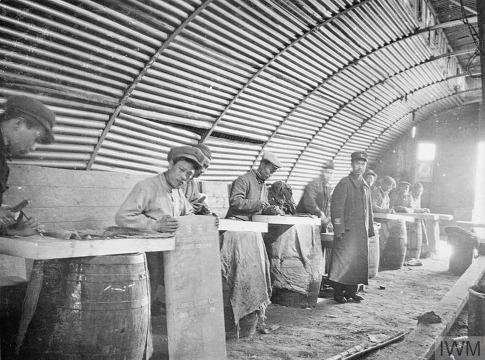
Imperial War Museums
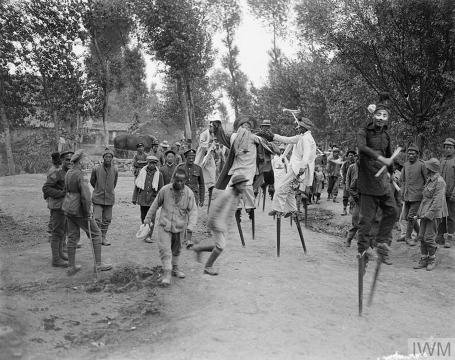
Imperial War Museums
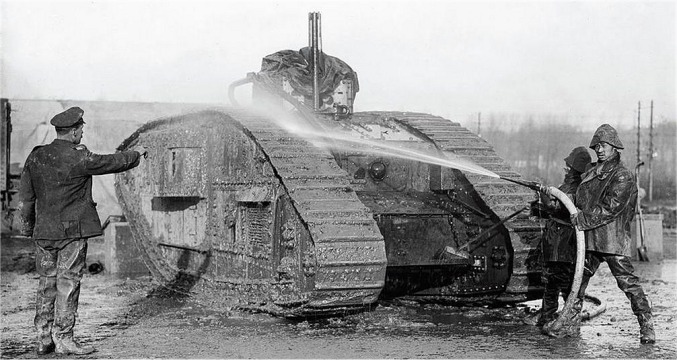
(Wikimedia Commons/Chatham House, London)
Chinese laborers filled a number of positions in World War I,
including at tank facilities like this one.
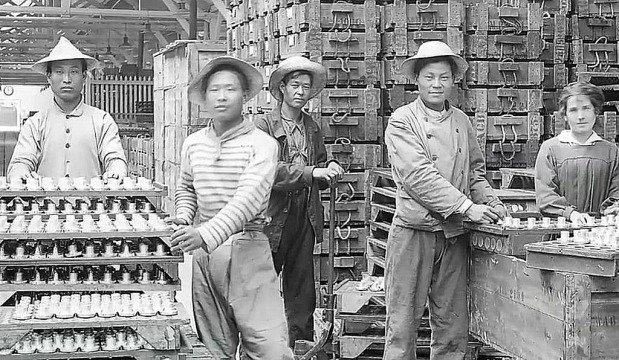
(Wikimedia Commons/Chatham House, London)
In other cases, Chinese workers staffed munitions factory during World War I.
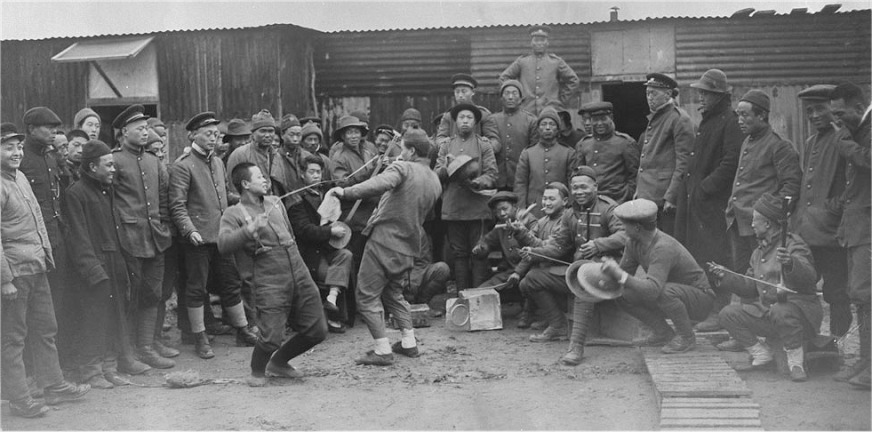
Chinese Labour Battalions in France celebrating the Chinese New Year on February 11th, 1918.
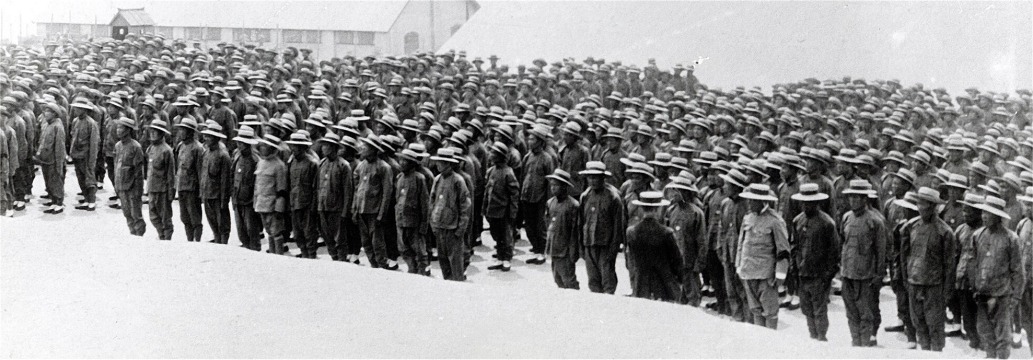
The Chinese Labour Corps toiled on the Western Front during World War I.
For their efforts and sacrifice, they were largely ignored and forgotten by the Allies after the conflict.
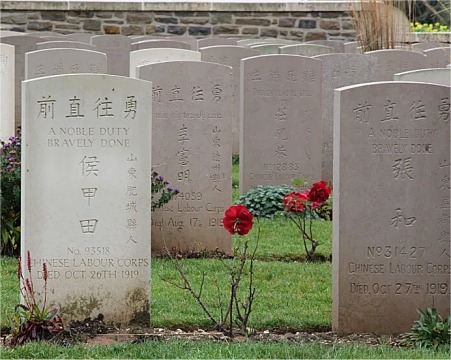
Photos: Peter Simpson
Chinese Labour Corps cemetery in Noyelles-sur-Mer, France.
All the white Chinese Labour Corps gravestones face east, towards home,
and the majority have only a serial number and an epitaph reading either
“A noble duty bravely done”, “Though dead he still liveth” or “A good reputation lasts forever”.
